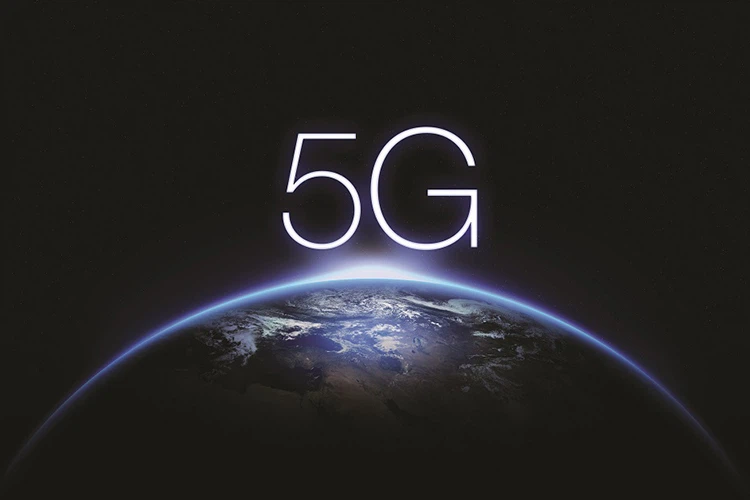Fifth-generation wireless (5G) is the most recent iteration of cellular technology, designed to significantly improve the speed and responsiveness of wireless networks. Data carried through wireless broadband connections can now move at multigigabit speeds, with some estimates putting peak speeds as high as 20 gigabits per second (Gbps). These speeds outperform landline network rates and have latency of 1 millisecond (ms) or less, making them ideal for applications that demand real-time input. Because of increased accessible bandwidth and enhanced antenna technology, 5G will enable a significant rise in the volume of data transferred across wireless systems.
To meet the growing reliance on mobile and internet-enabled devices, 5G networks and services will be deployed in stages over the next several years. As the technology matures, 5G is likely to spawn a slew of new applications, uses, and business cases.
How does 5G operate?
Wireless networks are made up of cell sites that are separated into sectors that carry data via radio waves. Long-Term Evolution (LTE) wireless technology of the fourth generation (4G) serves as the foundation for 5G. Unlike 4G, which requires massive, high-power cell towers to provide data over greater distances, 5G wireless signals are sent through a large number of small cell stations positioned in areas such as light poles or building roofs. The use of multiple small cells is required because the millimeter wave (MM wave) spectrum—the band of spectrum between 30 and 300 gigahertz (Ghz) on which 5G relies to generate high speeds—can only travel short distances and is susceptible to interference from weather and physical obstacles such as buildings or trees.
Previous generations of wireless technology employed lower-frequency spectrum bands. To address the issues of distance and interference with MM waves, the wireless industry is investigating the use of a lower-frequency spectrum for 5G networks, allowing network operators to expand out their new networks using spectrum they already control. Poorer-frequency spectrum travels farther but at a slower and lower capacity than MM wave.
Low- and midband frequencies comprise the lower frequency wireless spectrum. Low-band frequencies range between 600 and 700 megahertz (MHz), whereas mid-band frequencies range between 2.5 and 3.5 GHz. This is in contrast to high-band MM wave transmissions, which operate at frequencies ranging from 24 to 39 GHz.
MM wave signals can be easily blocked by objects such as trees, walls and buildings — meaning that, much of the time, MM waves can only cover about a city block within direct line of sight of a cell site or node. Different approaches have been tackled regarding how to get around this issue. A brute-force approach involves using multiple nodes around each block of a populated area so that a 5G-enabled device can use an Air interface — switching from node to node while maintaining MM wave speeds.
Another, more viable option to building a nationwide 5G network is to use a mix of high-, medium-, and low-band frequencies. In densely populated locations, MM waves may be employed, whereas low- and midband nodes may be used in less congested places. Low-band frequencies can go farther and through more objects. A single low-band 5G node can maintain a connection to a 5G-enabled device over hundreds of kilometres. This means that deploying all three bands will provide blanket coverage while also giving the fastest speeds in the most heavily frequented regions.
Is 5G really that fast?
Currently, 5G download rates can exceed 1,000 megabits per second (Mbps) or even 2.1 gigabits per second (Gbps). To illustrate, a user might start a 1080p YouTube video on a 5G mobile without it buffering. Downloading an app or a Netflix program, which can currently take several minutes, can now be completed in a matter of seconds. Wirelessly streaming 4K video becomes much more feasible as well. If using the MM wave, these instances would currently need to be within a city block of a 5G node; otherwise, the download speed would be reduced to 4G.
Low-band 5G can stay locked at 5G over longer distances, and while its overall speed is less than MM wave, it should still be faster than a decent 4G connection. Download speeds for low-band 5G could range from 30 to 250 Mbps. Rural areas are more likely to have access to low-band 5G. Midband 5G download speeds could range from 100 to 900 Mbps, and it will most likely be deployed in major cities.
5G’s Advantages
Even if the disadvantages of 5G are obvious when considering how easily MM waves may be blocked, or less obvious when considering radio frequency (RF) exposure restrictions, 5G has a number of worthwhile advantages, including the following:
Higher frequencies; higher bandwidth; enhanced mobile broadband; a 1 ms lower latency; higher data rates, which will enable new technology options over 5G networks, such as 4K streaming or near-real-time streaming of virtual reality (VR); and the possibility of a 5G mobile network made up of low-band, midband, and MM wave frequencies.


